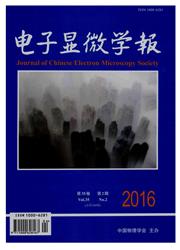

 中文摘要:
中文摘要:
应用电镜对噬菌体裂解 E蛋白介导沙门菌内外膜融合而形成的特异性跨膜孔道进行超微结构观察。42℃诱导携带温控表达质粒的重组鸡白痢沙门菌S06004(pBBR1MCS2-E)表达E基因以制备鸡白痢沙门菌菌影;样品经前处理,扫描电镜和透射电镜观察其形态结构变化。重组鸡白痢沙门菌经温度诱导后,绝大多数发生裂解,在两极形成直径介于200~400 nm之间的跨膜孔道,细菌整体呈空泡状,并保持完整的外膜结构,但细胞表面发生明显的褶皱。本研究为噬菌体E蛋白裂解沙门菌制备新型灭活疫苗的研究提供了形态学依据。
 英文摘要:
英文摘要:
Bacteriophage lysis protein E can lead to a fusion of the inner and outer membranes to form a specific transmembrane tunnel in Salmonella cytoderm. In this study, scanning electron microscopy ( SEM) and transmission electron microscopy ( TEM) were used to observe the characteristic of the transmembrane tunnel. Bacterial ghosts were prepared by inducing expression of the bacteriophage lysis gene E in Salmonella Pullorum S06004 harboring plasmid pBBR1MCS2-E. The pre-treatment of samples were observed by SEM and TEM. After induced in 42 ℃, the vast majority of Salmonella Pullorum recombinants could form a transmembrane tunnel at the polar sites of bacteria with a diameter varying in the range of 200~400 nm. Bacterial ghosts show the loss of cytoplasmic material and maintain the integrity of the outer membrane structure. The cell surface wrinkled obviously. This research provides an efficient morphological evidence for Salmonella ghosts as vaccine candidate, which is mediated by the bacteriophage lysis protein E.
 同期刊论文项目
同期刊论文项目
 同项目期刊论文
同项目期刊论文
 期刊信息
期刊信息
